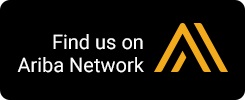What is Checklist ?
Checklist is a comparative method. Comparative techniques are based on hazard identification by comparing with standards. The various methods are checklist, safety audit, hazard indices and preliminary hazard analysis.
| Purpose | For to the point identification of hazards |
| Applicability | In design construction, commissioning, operation and shutdown phases. |
| Data required | Checklist is prepared from experience/ standard/ Rules/ Acts procedure manual/ knowledge of system or plant. |
| Results | Qualitative type and leads to “yes-or-no” decision with respect to compliance with the standard procedure. |
A broad view of plant inspection checklist:
- Environmental factors: Parts that are most likely to develop hazardous or unhealthy conditions due to stress, wear, effects, vibration, heat, corrosion, response, misuse or negligence, etc.
- Machinery: pinch points, grab points, shear points, squeeze points, points of run-in, points of service, etc. Transmission control viz. Shafts, belts, levers, pulleys, electrical control, insecure mechanisms for starting or stopping and protecting machines.
- Tools: an inappropriate instrument for the job, an instrument in an unsafe condition or put in an unsafe position, dangerous or faulty hand tools and machine tools.
- Work Area: Flooring-uneven, obstructed, slippery, cramped spaces, traffic visibility, unsafe work field. Piles. or overhead stuff, bad lighting, glare, too hot, too cold temperature, exposure to gases, dusts, fumes, vapors, etc., hazards from nearby operations; flying or dropping objects, electrical, chemical, hazards of radiation and trip-fall, office, aisle, platforms, stairs, railings, spillage, exits, doors, roofs, roadways, yards, etc.
- Material handling: existence of heavy, unwieldy, rough, sharp, hot, corrosive, explosive, poisonous etc. products or objects, unsafe handling of equipment-lifts, hoists, chain pulley blocks, containers, conveyors, trucks, cranes, derricks, elevators, chains, ropes, slings and methods of handling.
- Unsafe work practices: operating without permission, operating at unsafe speed, removing or in effectuating guards, using faulty or unsafe tools, handling materials unsafe, standing or working under suspended load, open hatches, shafts or scaffolds, walking on railroad tracks, inappropriately driving vehicles, etc., fixing or adjusting equipment in motion, under heat, electrically chained.
- Equipment: pressure vessels, rotary and vibratory equipment, pumps and generators, tanks, scrubbers, flares, effluent treatment plants, safety equipment, repair equipment, personal protection equipment, fire-fighting equipment, manufacturing and associated equipment, electrical equipment, power or energy equipment, storage equipment, etc.
- Specific points: Special control points should be included here, depending on the specialization of the facility, procedure, content, etc., and points not classified elsewhere. Special checklists for plant layout points, machine guarding, housekeeping, lighting, ventilation, fire, handling of materials, and various processes. Machinery, textiles, chemicals, etc.




0 Comments
Comment your doubt or opportunity to improve